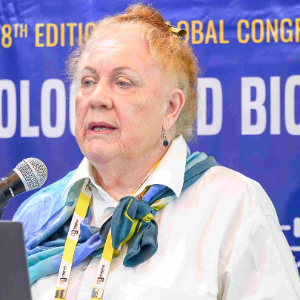Tropisms
Tropisms are directional growth responses that enable plants to adapt to their environment by growing toward or away from specific stimuli. Key types include phototropism (response to light), where plants grow toward a light source to maximize photosynthesis, and gravitropism, which directs roots downward and stems upward in response to gravity. Hydrotropism allows roots to grow toward moisture, ensuring water absorption in dry soils, while thigmotropism enables plants like vines to wrap around objects for structural support when they encounter touch stimuli. Chemotropism is observed in the fertilization process, where pollen tubes grow toward chemical signals from the ovules. These adaptive responses are fundamental for plant survival, and understanding them in biotechnology can lead to innovations in crop resilience and improved growth efficiency in various environments.

Mohammad Babadoost
University of Illinois, United States
Mary Cole
The University of Melbourne, Australia
Valasia Iakovoglou
UNESCO chair Con-E-Ect, International Hellenic University, Greece
Satya S S Narina
Virginia State University, United States
Sara Hailemariam
Purdue University, United States
Midhat Mahboob
Lincoln University, New Zealand


Title : Exploring the genetic diversity in tannin-rich forages to explain the large intra species variability in tannin content
Selina Sterup Moore, Aarhus University, Denmark
Title : Isolation and functional properties of biomolecules of plants and its application
Balagopalan Unni, GEMS Arts & Science College (Autonomous), India
Title : Primed for the future: PGPR and the promise of sustainable, heritable crop resilience
Prashant Singh, Banaras Hindu University (BHU), India
Title : Revealing allelic variations in candidate genes associated with grain yield under salinity stress between two contrasting rice genotypes
Nisha Sulari Kottearachchi, Wayamba University of Sri Lanka, Sri Lanka
Title : Adaptive strategies of Aristida L. species across ecological zones of Pakistan: Linking soil characteristics with morphological and physiological traits
Iram Ijaz, University of Agriculture Faisalabad Pakistan, Pakistan
Title : Ethnobotanical survey and abundance of weeds in selected Manihot esculenta (cassava) Crantz farms in Osun state, Nigeria
Dada Caleb Mayokun, University of Ibadan, Nigeria